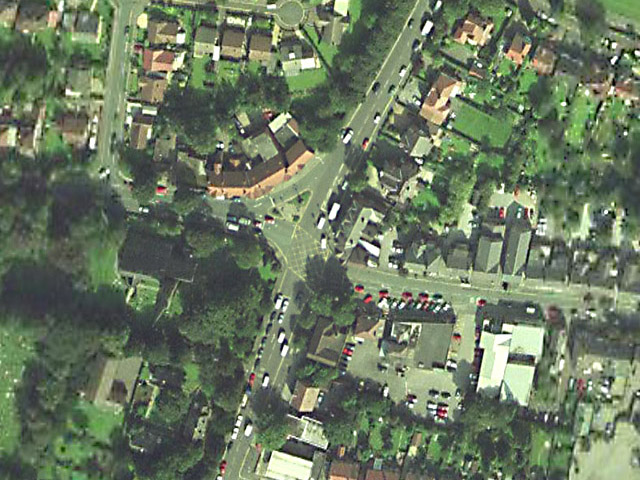

Poynton, or Poynton-with-Worth to give it it's full name, didn't get a mention in the Domesday Book but records exist showing that there has been a Manor at Poynton since 1289. A year or two before even I was born! The Manor was owned by a number of families, the last being the Vernon family who were the Landlords from 1826 until the then Lord Vernon sold up in 1920. The Towers, as the hall was known, has long since been demolished but the grounds are still largely intact and are now Poynton's Park, complete with a sizeable lake known as Poynton Pool.
Coal mining was carried on in Poynton for centuries and was the major provider of employment, at least during the 18th, 19th and early 20th centuries. The earliest reference to mining in the area is dated 1589 and the last coal was brought to the surface in 1935. Coal mining activity probably goes back much further than that, and it is entirely possible that the Romans obtained coal locally. They are known to have been in the area because roman artefacts have been found (my Grandfather found a roman coin in his garden) - and one of the coal seams is accessible from the surface. At the industry's height over 500 men were employed below ground and the peak output from the colliery was around 250,000 tons per year, but after the end of the 19th century profitability steadily declined. In the end it was the cost of pumping underground water that caused the end of mining in the village.
When I were but a lad, there was still plenty of evidence of mining in the form of derelict and semi-derelict buildings, and water was still pumped out of the old workings during droughts so that Poynton seldom had shortages. However, there is now little left apart from an old winding house that has been converted into an Architect's office, a few places where you can trace the line of the pit railways, and several unusual homes developed from old industrial buildings. I was saddened a few years ago when the old engine shed at Hockley was demolished to make room for a new development - philistines! Many of the old miners' cottages are still standing though, and despite being improved to modern standards the character has largely been maintained. If you're interested in more detailed information, David Kitching has a very interesting section on his web site covering all aspects of coal mining in Poynton. See my links page under Local History.
The Macclesfield, Bollington and Marple Railway used to run through Higher Poynton and took me to school in Macclesfield every day from age 11 onwards. On steam trains too, until diesels were introduced in 1957. The line was never electrified although there was one electric railcar used, nicknamed 'The Bollington Bug', a petrol-electric driven vehicle in regular use from 1912-1935.
Mr. Beeching didn't miss this line when he was wielding his axe, and it closed down on 3rd January 1970. A preservation society was formed and there was an effort to raise funds to preserve the line, as a commuter line during the week and as a steam line for enthusiasts at weekend. Unfortunately the appeal failed to raise the �1400.00 that BR wanted to leave the rails in place, so all the track was taken up and subsequently most of the buildings were demolished too. Fortunately the land wasn't broken up, and the line is now open again but for recreation, not transport, and now known as 'The Middlewood Way'. It's a long, narrow park and Nature Reserve, stretching between Macclesfield and Middlewood, with a footpath and bridleway along it's full length. It's an easy walk because the gradients were engineered to suit steam trains, and it passes through some of the prettiest countryside in the area.
If you're interested in finding out more, some interesting publications are available. There are probably many more, and if you let me know about them I'll gladly include them here.
If you came across this page by accident, click here to go to my Home Page